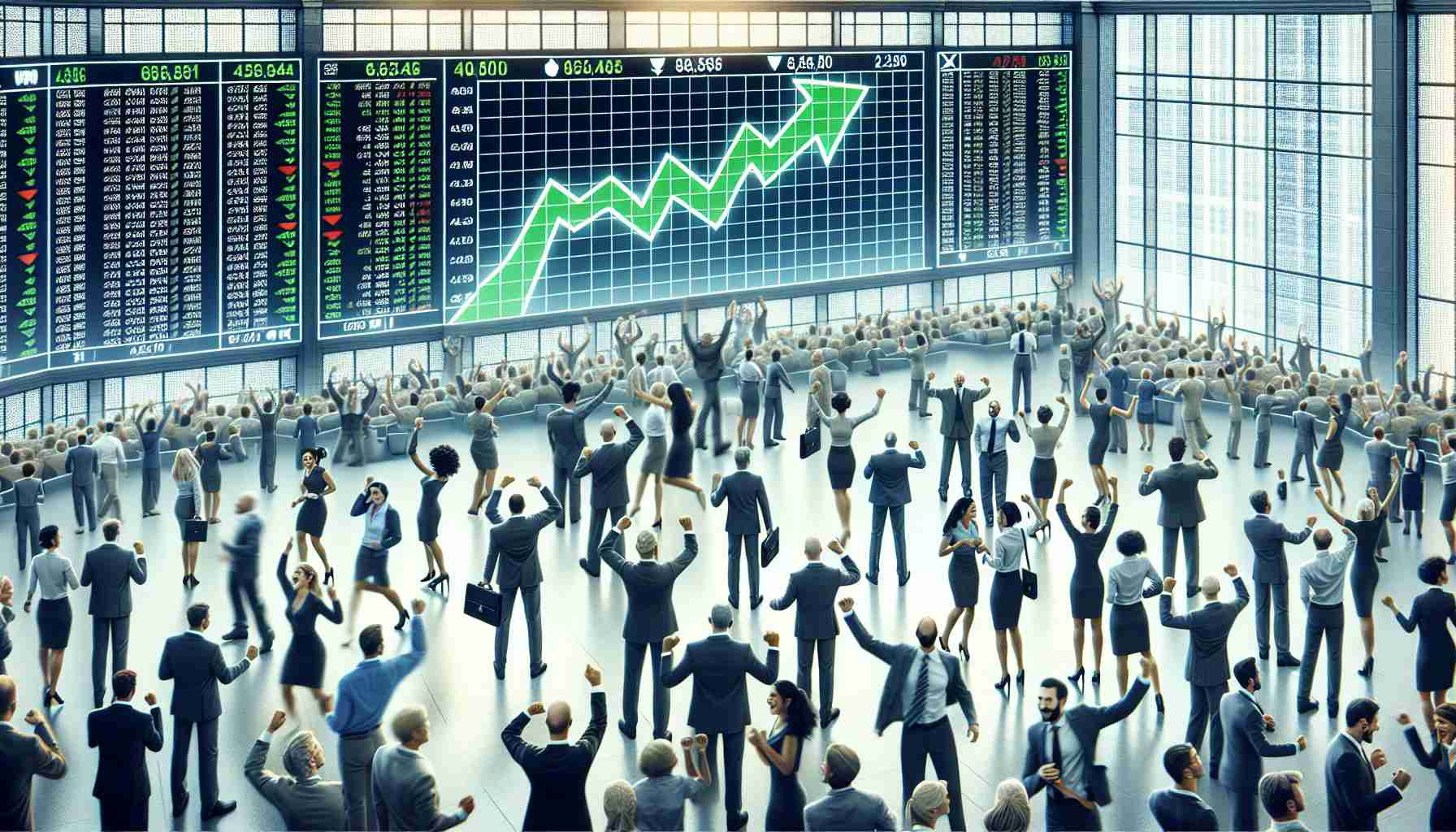Optimism flooded the markets during the inaugural trading session of Donald Trump’s presidency. The Dow Jones Industrial Average experienced a remarkable increase, soaring over 500 points, driven by the anticipation of the president’s economic policies.
The softer-than-expected approach to tariffs reassured investors, diminishing fears that had previously loomed over the market. While Trump had pledged to enforce significant tariffs, particularly a potential 25% on goods from Canada and Mexico, the lack of immediate implementation provided a much-needed sigh of relief across trading floors. This cautious yet proactive stance, which involved asking various governmental departments to analyze trade impacts, sparked enthusiasm among traders.
In addition, there was excitement surrounding President Trump’s impending announcement of a substantial investment plan in artificial intelligence, backed by prominent tech giants such as OpenAI, Oracle, and SoftBank. This investment, projected to inject billions into the U.S. AI sector, further fueled market optimism, leading major tech stocks like Nvidia, Amazon, and Alphabet to thrive.
Moreover, smaller companies saw notable gains, particularly evident in the Russell 2000 index, which rose nearly 2%. With bond yields retreating and a regulatory freeze established on the first day in office to boost fossil fuel production, traders’ perception of a business-friendly administration under Trump solidified.
As trading closed, investors remained optimistic about what the future holds, marking a dynamic start to a new chapter in U.S. economic policy.
Broader Implications of Market Optimism
The surge in the markets during the initial trading session of Donald Trump’s presidency not only reflects immediate financial excitement but also holds significant implications for society, culture, and the global economy. The market’s reaction signals a shift toward a pro-business ethos that could redefine American economic principles. If this trend persists, it may usher in a culture increasingly focused on profit maximization and expansion over environmental sustainability and social welfare.
The anticipated investment in artificial intelligence represents a pivotal moment for tech innovation in the U.S. As major companies align with governmental encouragement, we could see a cascade of advancements that shape industries and labor markets. However, this could also amplify existing concerns regarding job displacement and wage stagnation, as automation reshapes traditional roles.
Environmentally, the administration’s pro-fossil fuel stance raises alarms. The deregulation push could lead to significant carbon emissions increases, challenging global climate efforts. A prioritization of short-term economic gain over long-term ecological stability highlights a troubling trade-off for future generations.
Furthermore, international trade relations may face further turbulence, as protectionist sentiments could erode decades of globalization. If left unchecked, this trend risks isolating the U.S. economically, prompting retaliatory measures from trading partners and disrupting established supply chains. Thus, the implications of this market optimism extend far beyond Wall Street—reshaping the fabric of societal values and global interactions in the years to come.
Market Momentum: Unpacking the Financial Buzz of Trump’s Presidency
During the inaugural trading session of Donald Trump’s presidency, the financial landscape witnessed an unprecedented surge in optimism. The Dow Jones Industrial Average experienced an impressive gain of over 500 points, driven by a combination of President Trump’s economic strategies and a positive investor sentiment.
Market Trends and Innovations
One key factor contributing to this financial dynamism was the softer-than-expected approach to tariffs. Initial fears regarding aggressive tariffs—such as a potential 25% levy on goods from Canada and Mexico—began to dissipate as investors noted the administration’s patient and analytical stance. Instead of immediate implementations, the Trump administration’s focus on consulting various governmental departments about trade impacts reassured traders and allowed the markets to flourish.
In addition, the stock market buzz was amplified by the announcement of a monumental investment plan in artificial intelligence. With support from major tech leaders like OpenAI, Oracle, and SoftBank, this plan signifies a significant financial commitment expected to inject billions into the burgeoning U.S. AI sector. The anticipation surrounding this investment generated positive momentum, particularly fuelling demand for key tech stocks such as Nvidia, Amazon, and Alphabet.
Sector Performance and Economic Insights
Moreover, smaller companies enjoyed substantial gains, as evidenced by a nearly 2% rise in the Russell 2000 index. This uptick is indicative of a broader trend where smaller enterprises feel emboldened by the promise of a business-friendly administration. The retreat of bond yields further reinforced this sentiment, establishing an environment conducive to investment and growth.
Additionally, on Trump’s first day in office, a regulatory freeze aimed at enhancing fossil fuel production indicated a shift in the administration’s energy policy. This strategic move caught the attention of investors, reinforcing the vision of a pro-business ethos under Trump, which many traders welcome.
Pros and Cons of Trump’s Economic Policies
Pros:
– Surge in Market Confidence: Immediate boost in indices highlighting investor optimism.
– Investment in Technology: Significant focus on AI promises innovation and jobs.
– Support for Smaller Companies: Positive shifts in indices like Russell 2000 indicate growing opportunities.
Cons:
– Trade Tensions: Potential long-term risks associated with tariff implementation.
– Volatility in Markets: Rapid changes can lead to uncertainty for investors.
– Environmental Concerns: Increased fossil fuel production may raise sustainability issues.
Conclusion
As trading closed on that exhilarating day, the overall investor sentiment remained buoyant, with traders eagerly anticipating the future ramifications of the new economic policies. The market’s dynamic start not only reflects immediate investor confidence but also highlights a potential turning point in U.S. economic policy, where technology investment, small business support, and strategic trade analyses can pave the way for sustained growth.
For further insights into market trends and economic forecasts, visit our website.












